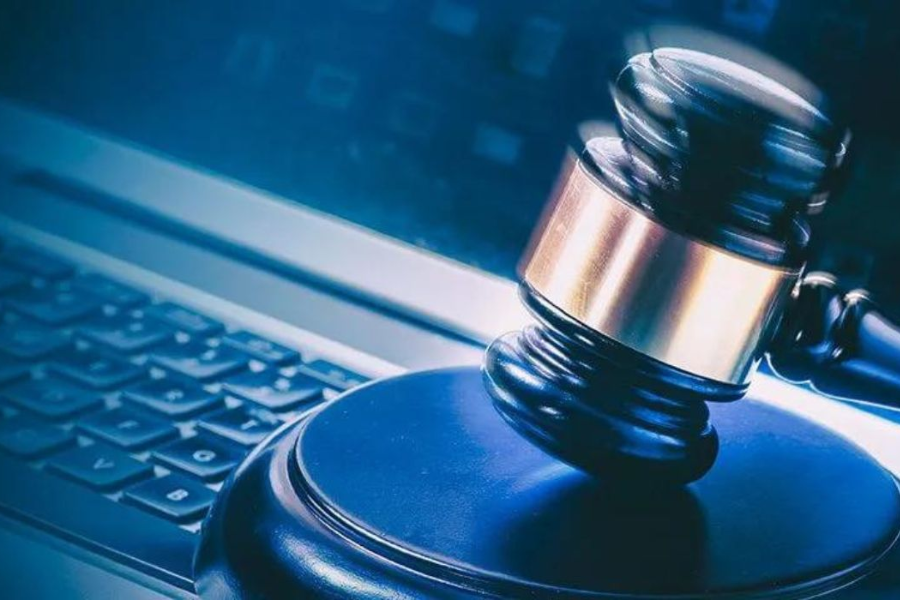Mastering Compliance in Modern Business: A Comprehensive Guide
A critical strategic choice in the fast-paced corporate world of today is to follow the law, moral standards, and industry norms. Understanding compliance’s importance, intricacies, challenges, and impending changes is essential for organizations navigating this complicated terrain.This comprehensive guide delves deeply into the complicated world of compliance, shedding light on its essential function, practical implementation strategies, and the ever-changing range of regulatory requirements.
Understanding Compliância
The process of establishing and maintaining guidelines, procedures, and controls that guarantee honesty and compliance with relevant laws and ordinances is referred to as complianceância, which comes from the word “compliance.” Consistence is basically the umbrella term incorporating administration, risk the executives, morals, and information security. It is an aide for working business lawfully and ethically.
Importance of Compliance
Compliance is essential in today’s business climate for several reasons.
Ethical Behavior and Consequence Avoidance: Since compliance lessens the likelihood that breaching rules may have disastrous consequences, it is the cornerstone of ethical corporate operations.
Credibility and Trustworthiness: Putting compliance first shows a strong dedication to maintaining moral principles, which inspires confidence amongst stakeholders.
Risk management: Businesses may recognize, evaluate, and control a range of risks to lessen the possibility of penalties, monetary losses, and reputational harm with the use of a well-organized compliance framework.
Promotion of Sustainability: Abiding by the law encourages moral business conduct that considers social, environmental, and governance concerns.As a result, compliance and sustainability are closely related.
Strategic Imperative: In the dynamic world of contemporary business, compliance is insufficient.
Key Aspects of Compliance
The following significant elements influence the compliance landscape:
Legitimate and administrative consistence: Associations should regularly review and survey their tasks to guarantee that they are consistent with all important regulations and guidelines to keep up with consistence.
Ethical Standards and Conduct: Businesses should emphasize preserving high ethical standards by implementing strict ethics regulations and hiring ethical leadership, in addition to abiding by the law.
Risk management: The success of compliance programs depends on the accurate identification and management of compliance risks.This need ongoing supervision and direction.
Data Security and Privacy: Ensuring the safety of personal data requires not only following legislation but also implementing thorough data privacy safeguards.
Continuous Improvement: Organizations must continuously adapt to changing requirements, evolving hazards, and fluctuating business expectations through routine review.The process of compliance never ends.
Implementing an Effective Compliância Program
The following actions may be taken by companies to set up a successful compliance program:
To identify compliance vulnerabilities, start with rigorous audits, evaluations, and risk assessments to identify weak points and rank the greatest risk areas.
Create Policies and Procedures: To provide staff direction, clearly define activities and behaviors that adhere to established standards and rules.
Provide Training: Organize frequent training sessions for staff members to learn about rules and compliance issues. Programs may be customized to meet the unique requirements of various departments.
Monitor and Audit Compliance: To guarantee adherence to standards, keep a careful check on operations through independent audits, frequent monitoring activities, and inquiries into any non-compliance problems.
Enable Confidential Reporting: Create avenues via which staff members can anonymously report misconduct, encouraging a culture of
Measuring Compliance Success
In order to evaluate the efficacy of a compliance program, entities may use many metrics:
Leading Indicators: These preventative actions, which include risk evaluations, audit frequency, and training coverage, show how well compliance initiatives are being carried out.
Lagging Indicators: These reactive measures, which include audit results and any fines levied by regulatory agencies, provide information on previous compliance efforts and potential improvement areas.
Qualitative Measures: Employee comprehension of compliance procedures and the company culture surrounding compliance may be assessed through surveys and evaluations, identifying opportunities for improvement.
Integration of Metrics: Businesses may obtain a more thorough grasp of the effectiveness of their compliance programs and identify key performance areas by integrating qualitative measurements with both leading and trailing indicators.
Common Compliance Challenges
Several obstacles may impede attempts to comply:
Complicated rules: Organizations have a great deal of difficulty in keeping up with complex rules that are often changing.
Resource constraints: It might be difficult for certain companies to commit enough money and qualified personnel to compliance efforts.
Keeping Up: Organizations that are unable to stay abreast of regulatory modifications run a higher risk of non-compliance.
Technological Complexity: New compliance challenges including security, risk management, and data privacy emerge as our reliance on technology grows.
Globalization: Due to varying legal frameworks and compliance requirements, conducting business internationally can be difficult.
Leveraging Technology for Compliance
Technology is essential for supporting compliance initiatives because:
Software for compliance: Centralized systems automate the distribution of policies, organize training sessions, carry out audits, and oversee corrective measures. This increases productivity, improves efficiency, and promotes openness inside the company.
Data Analytics: Using the insights obtained from data analysis makes it easier to discover areas that require improvement and to detect compliance concerns. In order to improve their compliance practices, this helps firms to deploy resources more wisely and make well-informed decisions.
Automation: Organizations may reduce human mistakes and speed up operations by automating compliance activities through optimized workflows. This improves productivity while guaranteeing uniformity in compliance protocols.
Integration and Customization: Combining compliance software with already-in-use systems and developing solutions specifically for the organization’s requirements increases functionality and
The Future of Compliância
In the future, a number of trends are anticipated to influence compliance:
AI and Machine Learning: Increasing compliance efficiency will depend on the mix of AI and ML technologies, which will automate processes and enhance risk forecasts.
intensified Enforcement and Penalties: Tougher compliance standards and heavier fines for non-compliance will be the outcome of regulatory bodies’ intensified enforcement efforts. As a result, organizations will need to establish more robust risk management and compliance protocols.
Increased International Coordination: To standardize compliance standards across borders, there will be an effort to increase international collaboration. This will force businesses to create thorough worldwide compliance plans in order to handle the challenges of conducting business across borders.
Put an emphasis on corporate responsibility and ethical behavior: Apart from adhering to regulations, there will also be a
Facts:
Definition: Compliância, derived from “compliance,” encompasses establishing and maintaining guidelines, procedures, and controls to ensure honesty and compliance with relevant laws, ordinances, and ethical standards.
Importance: Compliance is crucial in modern business due to its role in promoting ethical behavior, credibility, risk management, sustainability, and as a strategic imperative.
Key Aspects: Legitimate and regulatory compliance, ethical standards, risk management, data security, and continuous improvement are significant elements influencing the compliance landscape.
Implementation Strategies: Rigorous audits, clear policies and procedures, frequent training, monitoring, and enabling confidential reporting are essential actions for setting up an effective compliance program.
Measuring Success: Compliance success can be evaluated using leading indicators (e.g., risk assessments), lagging indicators (e.g., audit results), and qualitative measures (e.g., employee comprehension).
Challenges: Common obstacles to compliance include complicated rules, resource constraints, keeping up with regulatory changes, technological complexity, and globalization.
Technology’s Role: Technology supports compliance initiatives through software automation, data analytics, and integration/customization, improving efficiency and productivity.
Future Trends: Anticipated trends in compliance include the integration of AI and machine learning, intensified enforcement and penalties, increased international coordination, and a focus on corporate responsibility and ethical behavior.
Summary:
“Mastering Compliance in Modern Business” provides a comprehensive overview of compliance (compliância) in contemporary corporate environments. It emphasizes the importance of compliance in maintaining ethical standards, credibility, risk management, and sustainability. The guide covers key aspects of compliance, implementation strategies, measurement of success, common challenges, leveraging technology, and future trends. Through facts, insights, and practical guidance, the guide equips organizations with the knowledge needed to navigate the complex terrain of compliance effectively.
FAQs:
Why is compliance important in modern business?
Compliance is crucial as it ensures ethical behavior, credibility, risk management, and sustainability, while also serving as a strategic imperative in today’s dynamic business landscape.
What are the key aspects influencing compliance?
Legitimate and regulatory compliance, ethical standards, risk management, data security, and continuous improvement are significant elements shaping the compliance landscape.
How can organizations measure compliance success?
Compliance success can be evaluated through leading indicators (e.g., risk assessments), lagging indicators (e.g., audit results), and qualitative measures (e.g., employee comprehension), providing insights into the effectiveness of compliance programs.
What are common challenges to compliance efforts?
Common challenges include complicated rules, resource constraints, keeping up with regulatory changes, technological complexity, and the complexities of globalization, all of which can impede compliance initiatives.
How does technology support compliance initiatives?
Technology plays a crucial role in compliance by facilitating software automation, data analytics, integration, and customization, thereby improving efficiency, productivity, and the effectiveness of compliance protocols.






